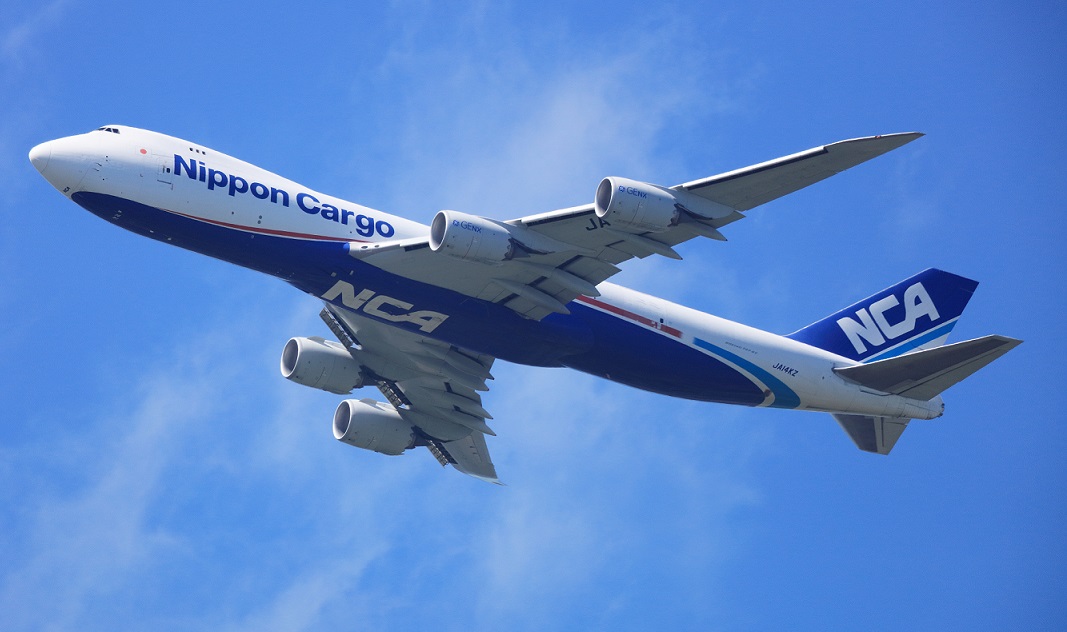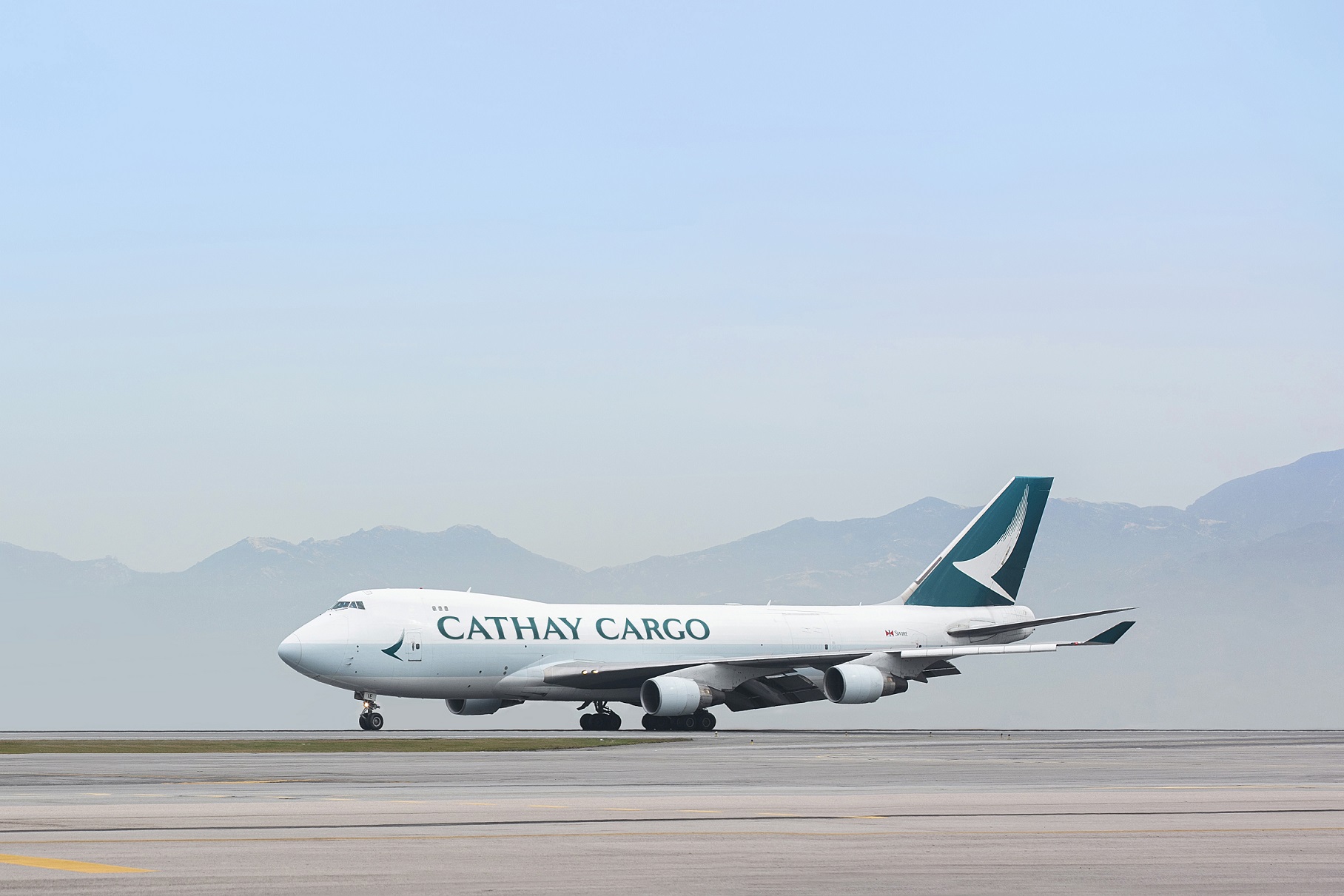Recovering transpacific market needs more lift
05 / 04 / 2024

Nippon Cargo Airlines Boeing 747-8F. Photo: Daisuke Shimizu/ Shutterstock
Capacity growth on the transpacific trade lane needs to continue to match a recent surge in e-commerce volumes.
An unexpected surge in demand in November and December rescued airlines’ peak season, which had looked rather tepid in October.
“It was a good peak season, especially from Asia to the US,” says Shawn McWhorter, president for the Americas at Nippon Cargo Airlines (NCA).
First and foremost, this has been attributed to rampant growth in e-commerce flows out of China, spearheaded by the likes of Temu and Shein.
“E-commerce demand finished on a strong note in 2023, which helped put our yields above 2019 levels,” reports Tom Owen, director cargo of Cathay.
“We are confident that 2024 will be a reasonable year for cargo, led by e-commerce, a large amount of which is sourced from the southern part of the Chinese mainland, so Hong Kong and Cathay Cargo are ideally placed. E-commerce has the potential to occupy a significant proportion of our available capacity.”
Matt Casey, managing director of commercial at Air Canada Cargo, says that e-commerce has helped sustain some volumes that would have otherwise contracted.
Other sectors, notably special cargoes like pharmaceuticals, have contributed to the upturn in traffic, Owen remarks. This is going to remain a major focus for Cathay this year, which will include the refinement of services for project cargo and dangerous goods as well as the courier segment.
Brian Bourke, global chief commercial officer of SEKO Logistics, agrees that the growth has been carried on a broader front.
“E-commerce has taken a large share of airfreight demand out of Asia, but in the latter half of last year both e-commerce and traditional B2C traffic improved,” he says, pointing to high-tech and automotive traffic as major drivers.
He adds that brands were launching new products and inventory levels had finally returned to the point where firms were ordering products again.
Nearshoring on the rise
Another trend that is affecting airfreight developments across the Pacific is the rise of Mexico driven by nearshoring.
“Last year was the first time that it seemed every fashion brand was asking about Mexico fulfillment,” reports Bourke, adding that he expects the momentum to continue. “Other industries will follow the automotive sector in creating industry clusters near the US-Mexico border,” he predicts.

Brian Bourke, chief commercial officer, SEKO Logistics
Among the companies that are setting up production facilities in Mexico are Chinese manufacturers who want to maintain their access to the North American market. Like their US and multinational counterparts, they rely on some flows from Asia to feed their new facilities in Mexico.
Cathay entered the Mexican market 10 years ago with two weekly flights. This is now up to daily frequency, with two daily flights on Wednesdays.
NCA is working on expanding its reach into Mexico and Latin America.
“We see good demand between Mexico and Asia,” says McWhorter. The airline is using interline partners to connect to its US gateways, especially Dallas/Ft Worth.
For Air Canada Cargo traffic between Asia and Latin America has been a considerable factor behind its better results last year compared to its US and European rivals, says Casey.
“We continue to feed our Latin American network from Asia,” he adds.
For Asian airlines connectivity to Latin America remains attractive. China Cargo is set to launch three weekly flights with Boeing 777 freighter equipment from its Shanghai base to Miami, with a tech stop in Los Angeles. Originally this was supposed to kick off in January but was pushed back to April.
E-commerce is a factor in this equation too. Jimmy Nares, section chief aviation marketing at the Miami-Dade Aviation Department, observes that e-commerce flows from Asia through the airport to Latin America are on the rise.
At its Dallas/Ft Worth station, where Cainiao Airlines is among its customers, handler dnata has seen strong growth in e-commerce flows as well as in special freight like pharmaceuticals and is in the process of preparing for an expansion of its facilities at DFW.
The airport has positioned itself as a gateway between Asia and Latin America, which has brought in flights by JAL and Emirates.
NCA is looking to step up its presence at the airport beyond its current frequency of two flights a week, McWhorter says. For NCA, 2024 should open the door to new possibilities once the marriage with All Nippon Airways is official.
This will expand NCA’s sales capacity in North America to a string of airports served by ANA – including San Francisco, Houston, Washington and Boston. In addition, it expands the freighter airline’s reach to Asian markets.
“We will be able to feed into each other’s networks. ANA is huge intra-Asia with their 767 freighter network,” McWhorter says.
While the strong increase in e-commerce volumes has been a boon to airlines, it also brings new challenges, as the underlying business model has changed, he notes.
Temu and Shein tend to produce goods in China when the order is received and then send individual shipments by air to consumers, bypassing distribution centres in North America. Other e-commerce firms and brands are adopting this strategy, Bourke points out.
This changes the ground handling at the destination airport. Instead of a few skids, handlers have to break down ULDs into a host of individual shipments.
If not properly planned in advance, this can easily clog a warehouse, McWhorter warns.
SEKO has changed its game in response to these developments. It is critical that it can track shipments at the parcel level, says Bourke.
Moreover, SEKO has invested over the past year in its ability to build pallets and consolidations. This gives the forwarder more options, it saves time at destination and it can lock in long-term rates, says Bourke.
“We’re signing more long-term positions in the region and taking more positions on scheduled charters,” he adds.
Capacity conundrum
Given the cost-sensitivity of most e-commerce shipments, cost is a significant factor. This makes the availability of belly capacity critical.
Globally this has risen in double-digit percentage terms over much of last year, but the surge in travel demand has been patchy.
Whereas capacity on the North Atlantic went through the roof last year, growth has been a lot slower in the transpacific arena, especially in the North America-China sector, where capacity has remained at a fraction of pre-pandemic levels.
“Our capacity is not what it was or could have been to some markets. Capacity to China is significantly down,” confirms Casey.

Matthieu Casey, Air Canada. Source: Air Canada
Cathay is on course to bring its capacity back to pre-pandemic levels before the end of this year, says Owen. Last year it raised passenger capacity to 70% and cargo to 85% of their 2019 levels.
“We are committed to progressively restoring our passenger flight operations on transpacific routes to our online destinations in 2024. We will also continue to evaluate our network and strategically re-deploy our capacity to destinations that may offer greater growth potential,” Owen remarks.
Currently, Cathay serves 15 destinations in North America and is operating over 300 flights a month this summer.
Air Canada Cargo has supplemented its limited lift out of China with interline connections from China and Hong Kong to its Asian hubs in Japan and Korea.
“We’ve been able to almost double our capacity out of China,” Casey says.
The airline is boosting its presence in Osaka this spring with a seasonal operation of three weekly Boeing 787-8 flights to Toronto, supplementing its six weekly flights to Vancouver.
Other North American carriers are also ramping up flights to Northeast Asia. Aeromexico is resuming flights to Seoul this summer with a daily frequency, American is adding daily flights between New York JFK and Tokyo Haneda, while United Airlines has announced flights between Haneda and Guam with Boeing 737-800 planes.

Source: Cathay Pacific
Air Canada added Bangkok to its network last year, which should have helped tap into some flows out of Southeast Asia that have risen as a result of the ‘China-plus-one’ strategy that firms have adopted for their sourcing.
For the most part, the airline serves Southeast Asian markets like Vietnam through interline arrangements.
“We’re seeing diversification in sourcing,” confirms Bourke. This has created challenges for SEKO, as options out of origins like Phnom Penh are limited and it is more challenging to build up economies of scale in these markets.
Still, China’s manufacturing and logistics infrastructure remain formidable and impossible to replace in the short term.
“We’ve seen companies that wanted to move 100% out of China but could do only 20%. Cost and scale out of China are hard to replicate,” Bourke says.
He hopes that belly capacity will grow at a faster clip than demand, given space constraints and the importance of competitive pricing for e-commerce. Without this growth, the next peak season would be challenging, he warns.
The disruptions to global supply chains in the Red Sea and the Panama Canal sparked some reports of a surge in airfreight demand and an interest in sea-air options. By and large, though, the impact appears to have been minor as far as the transpacific arena is concerned.
“I’ve not really seen an impact from the Red Sea and the Panama Canal problems,” remarks Casey.
For SEKO sea-air is one of the risk mitigation options to consider for peak season and other notable spikes. “It can be an option, but as a stop-gap, an emergency measure,” says Bourke.
As recent predictions and economic indices point to a bumpy road to moderate growth for global trade – with slightly improved outlooks for Chinese exports and the US economy – a scramble for transpacific capacity looks unlikely, but recent years have shown that significant disruption can emerge abruptly.
Big three US airlines again delay resumption of further China flights














